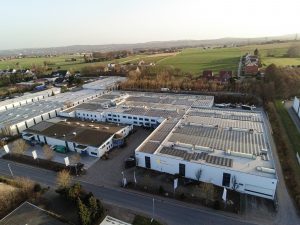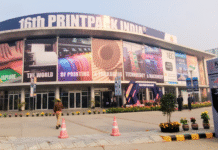
Sattler Media Group GmbH has over 500 employees working at four production sites in Germany – Bad Oeynhausen, Hildesheim, Hornburg, and Magdeburg. The company uses sheetfed offset, web offset, and digital printing technologies to manufacture catalogs, magazines, mailshots, and newspaper supplements, describing itself as a strong partner for all aspects of cross-media dialog marketing. It supplies print products to food retailers, publishing houses, furniture manufacturers, the tourism industry, and insurance companies.
Sattler Premium Print GmbH, which is based in Bad Oeynhausen, has been part of Sattler Media Group GmbH since November 2020. This is where the Group has concentrated its sheetfed offset printing portfolio. With a view to boosting its performance and competitiveness, the company has now invested in the very latest production technology, thereby modernizing its entire sheetfed offset printing process, from the cut sheet through the actual printing process to signatures that are palletized on a fully automated basis.

This major order went to Heidelberger Druckmaschinen AG (Heidelberg). It includes an eight-color Speedmaster XL 106-8-P+L perfecting press of the latest generation, an all-buckle high-performance Stahlfolder TH 82-P folding machine with PFX feeder and P-Stacker, and a Polar N 137 PACE cutting system with Autotrim, rear table loading, and automatic rotation (PACE stands for Polar Automation for Cutting Efficiency). The new machines are to be commissioned between April and July 2022.
Fully automated from the flat sheet through to the palletized signature
“The aim of the investment is to significantly increase production output without changing staffing levels,” explains Ralf Büttner, managing director Technology + Organization at Sattler Media Group. “By this summer, thanks to technology from Heidelberg, we will have largely automated our entire process from the unprinted flat sheet through the folding process to the palletized signature.” To achieve this, Sattler Premium Print will integrate the sheetfed offset, cutting, and folding technology into a digital workflow control system. Any information that will help maximize speed in an automated setup process is transferred to the production systems from the prepress stage. This also includes data from the imposition software for fully automated calculation of the cutting programs on the Polar PACE system.
Stahlfolder TH 82-P carries forward peak performance
Büttner expects the Stahlfolder TH 82-P folding machine to considerably speed up production, too. The PFX feeder introduces the flat sheets into the folding system shingled, which will help Sattler Premium Print achieve a folding output of up to 18,000 sheets per hour. This will mean the Stahlfolder TH 82-P can keep pace with production on the Speedmaster XL 106, so that the peak performance in sheetfed offset printing can be carried seamlessly through to postpress. A P-Stacker installed at the output of the folding machine will take the stacks of signatures and automatically set them down on pallets. Besides safeguarding excellent process stability at high speeds, the robot also takes care of heavy physical work that would otherwise be left to staff. This means employees can apply their skills to other production tasks instead. “We scoured the market very carefully and considered various options,” recalls Büttner. “Ultimately, Heidelberg won us over with its complete, highly automated system, which covers the process chain from end to end with coordinated components.”
As part of a service contract, Sattler Premium Print has locked in service and maintenance work for a period of 24 months, which can be extended to a further 48 months. The contract also covers regular software updates on the Prinect Press Center XL 3, the control station of the Speedmaster XL 106.
Investment activity on the rise
The decision made by Sattler Premium Print GmbH to invest in the latest high-performance technology is a good example of the positive outlook that has returned to the printing industry in Germany. Over the past two years, the sector has held back somewhat, but printing companies are now increasingly looking to update their technology and invest in state-of-the-art production systems. David Schmedding, managing director of Heidelberger Druckmaschinen Vertrieb Deutschland GmbH, believes developments are moving in the right direction, “We are starting to see an uptick in investment activity across all markets and regions. The sales we have made in the past few months are cause for optimism and show that Heidelberg is on the right track with its innovative solutions supported by a consistent digitalization strategy.”















